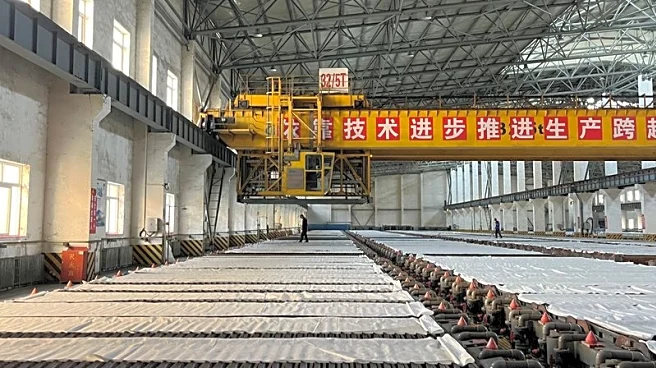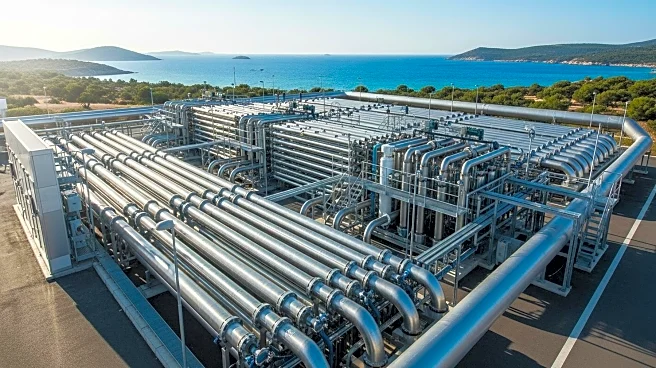What's Happening?
Global copper mine output is projected to increase by 2.1% in 2025, reaching 23.4 million tonnes, up from 22.9 million tonnes in 2024. This growth is primarily driven by increased production in countries
like Zambia, Chile, Mongolia, the Democratic Republic of the Congo (DRC), and Peru. However, the expansion is constrained by declining output in Indonesia and Australia. In Indonesia, PT Freeport Indonesia's Grasberg Block Cave mine faces reduced production due to lower ore grades and operational disruptions. Additionally, the Indonesian government's ban on copper concentrate and anode sludge exports from January 2025 further limits production. Australia also anticipates lower output due to challenges at Newmont's Cadia and Boddington mines.
Why It's Important?
The modest growth in global copper output has significant implications for industries reliant on copper, such as electronics and construction. The constraints in Indonesia and Australia could affect global supply chains, potentially leading to increased prices and impacting manufacturers and consumers. The situation underscores the importance of diversifying copper sources and investing in infrastructure to mitigate supply disruptions. Countries like Zambia and Peru are poised to benefit from increased production, potentially enhancing their economic standing and influence in the global copper market.
What's Next?
Looking ahead, global copper supply is expected to grow at a compound annual growth rate of 4.3%, reaching 28.9 million tonnes by 2030. This growth will likely be driven by continued investments in mining infrastructure and technology in countries like Zambia and Peru. The Indonesian government's free trade agreement with the EU, eliminating duties on over 90% of goods, may also shape future trade flows, enhancing access to critical minerals like nickel and copper. Stakeholders in the copper industry will need to adapt to these changes and explore new opportunities for growth.
Beyond the Headlines
The challenges faced by Indonesia and Australia highlight the broader issues of resource management and environmental sustainability in mining operations. As countries strive to balance economic growth with environmental protection, the copper industry may see increased pressure to adopt sustainable practices. This could lead to innovations in mining technology and a shift towards more environmentally friendly methods of extraction and production.












